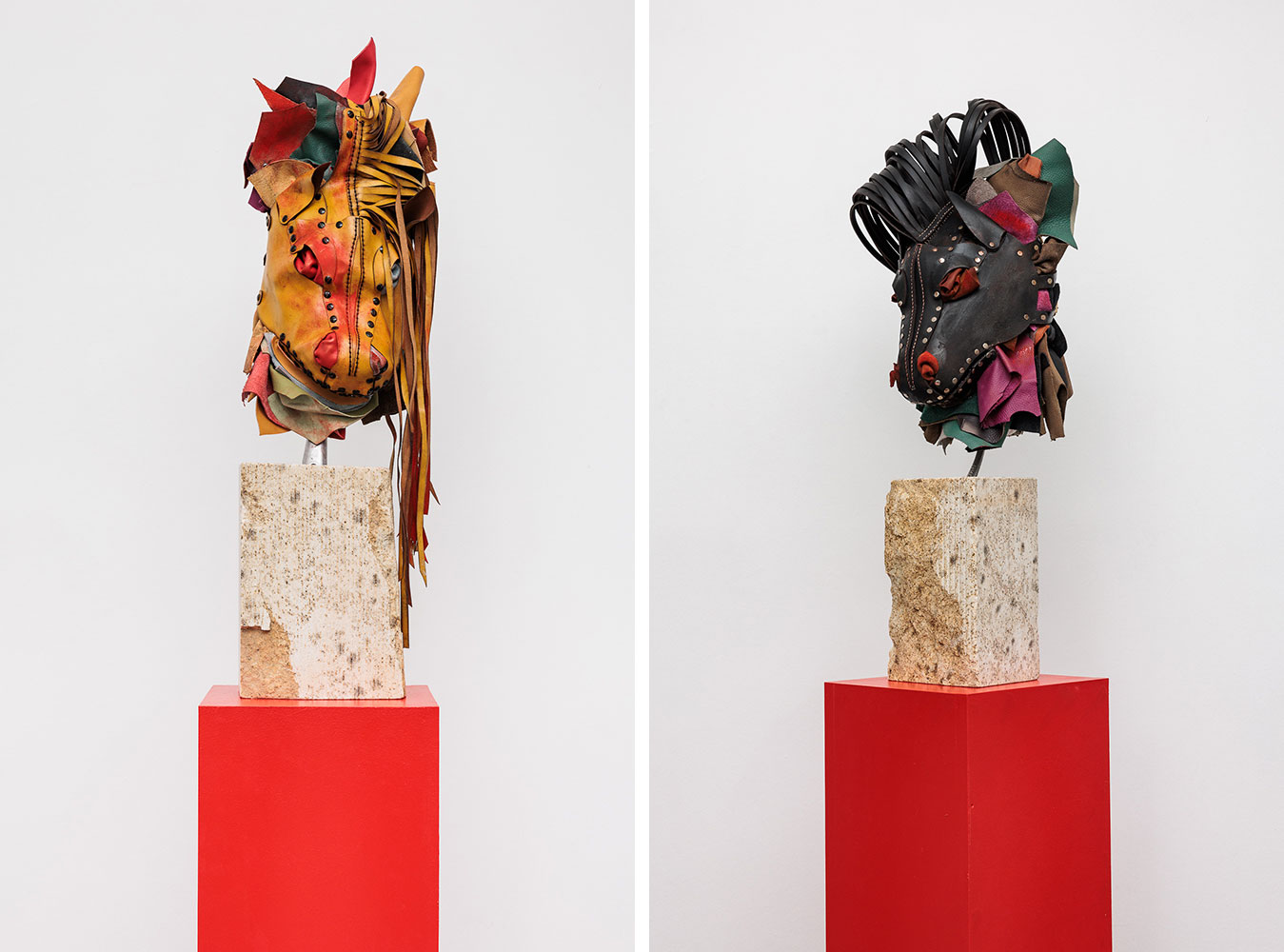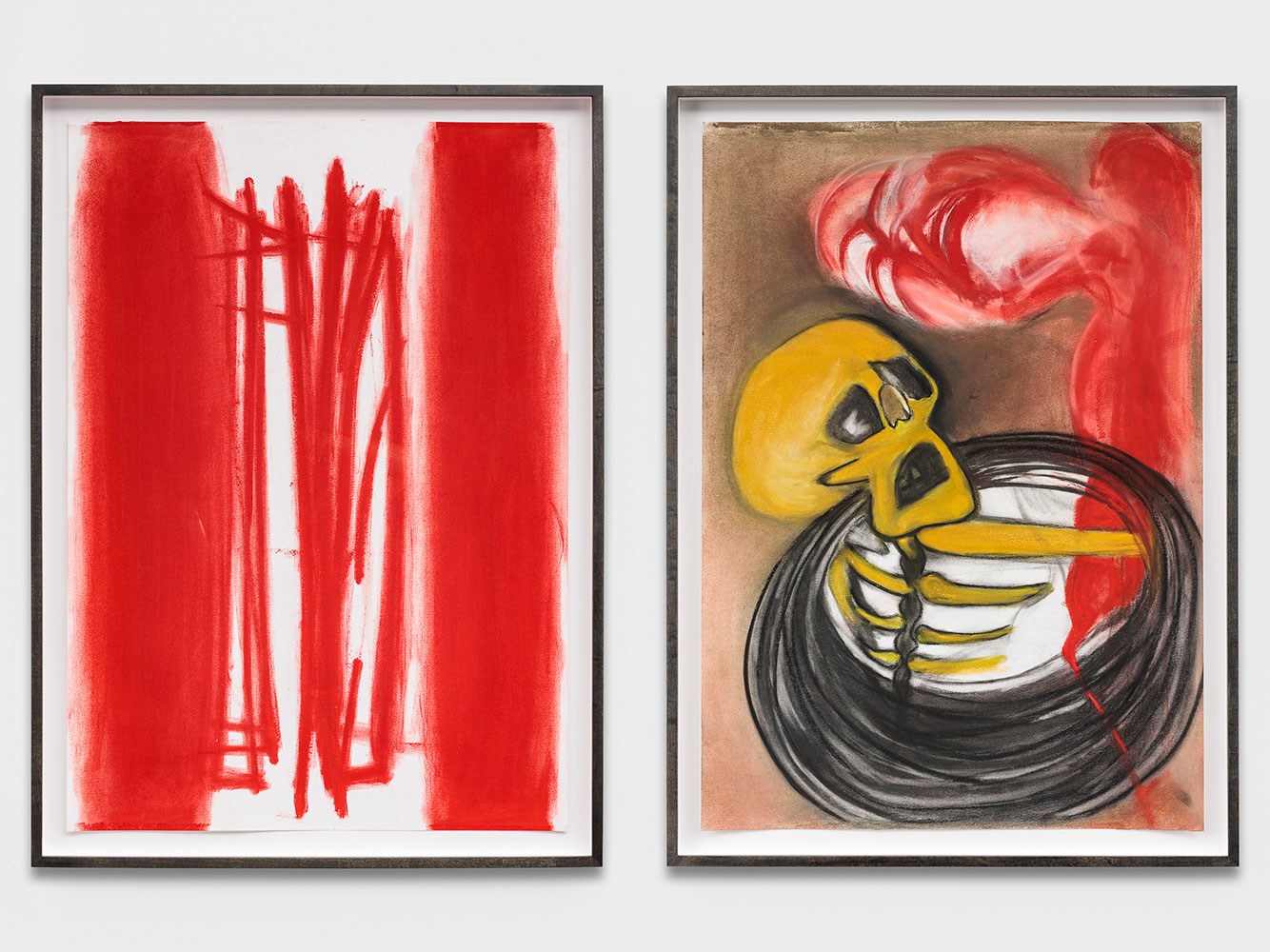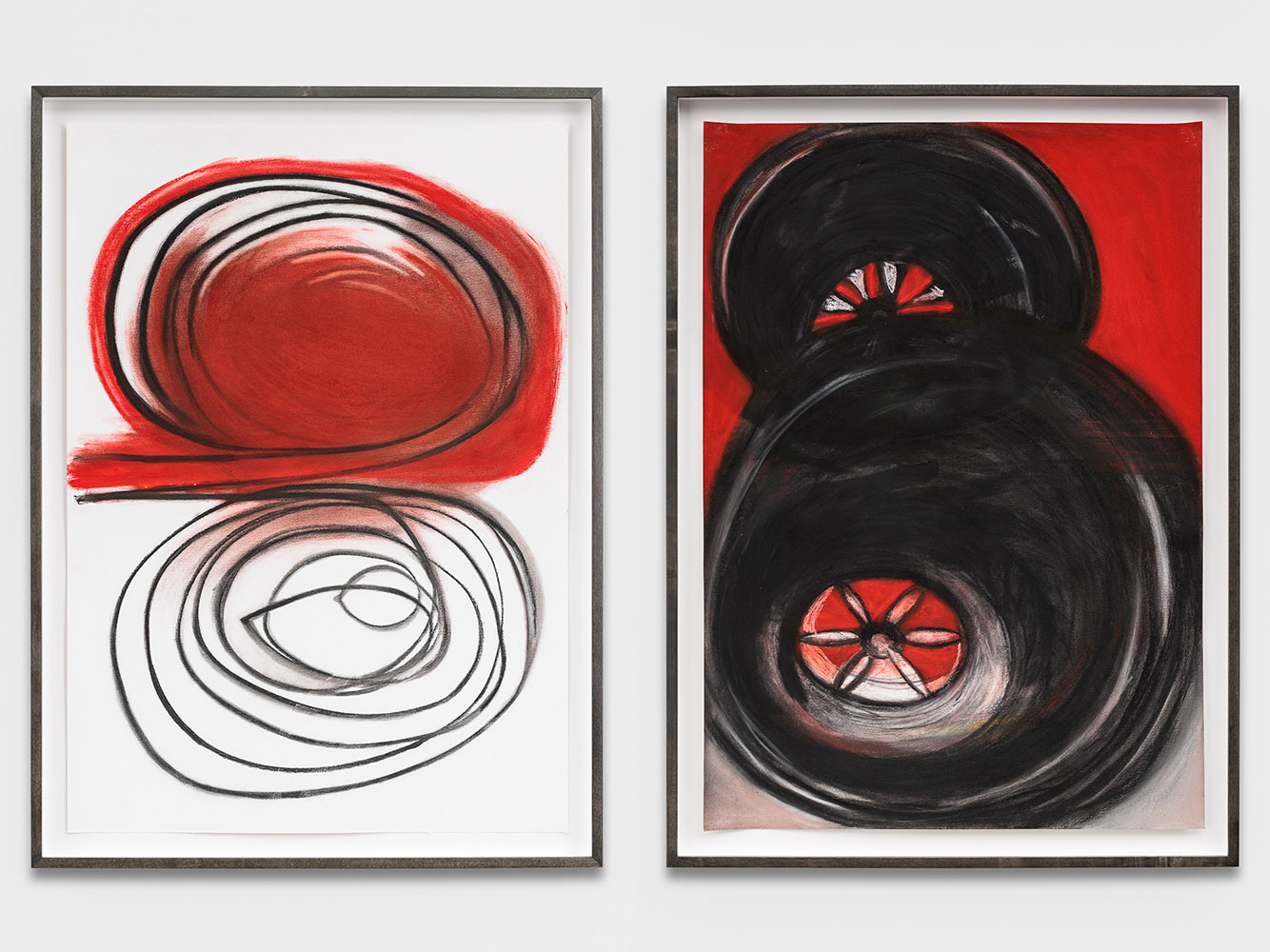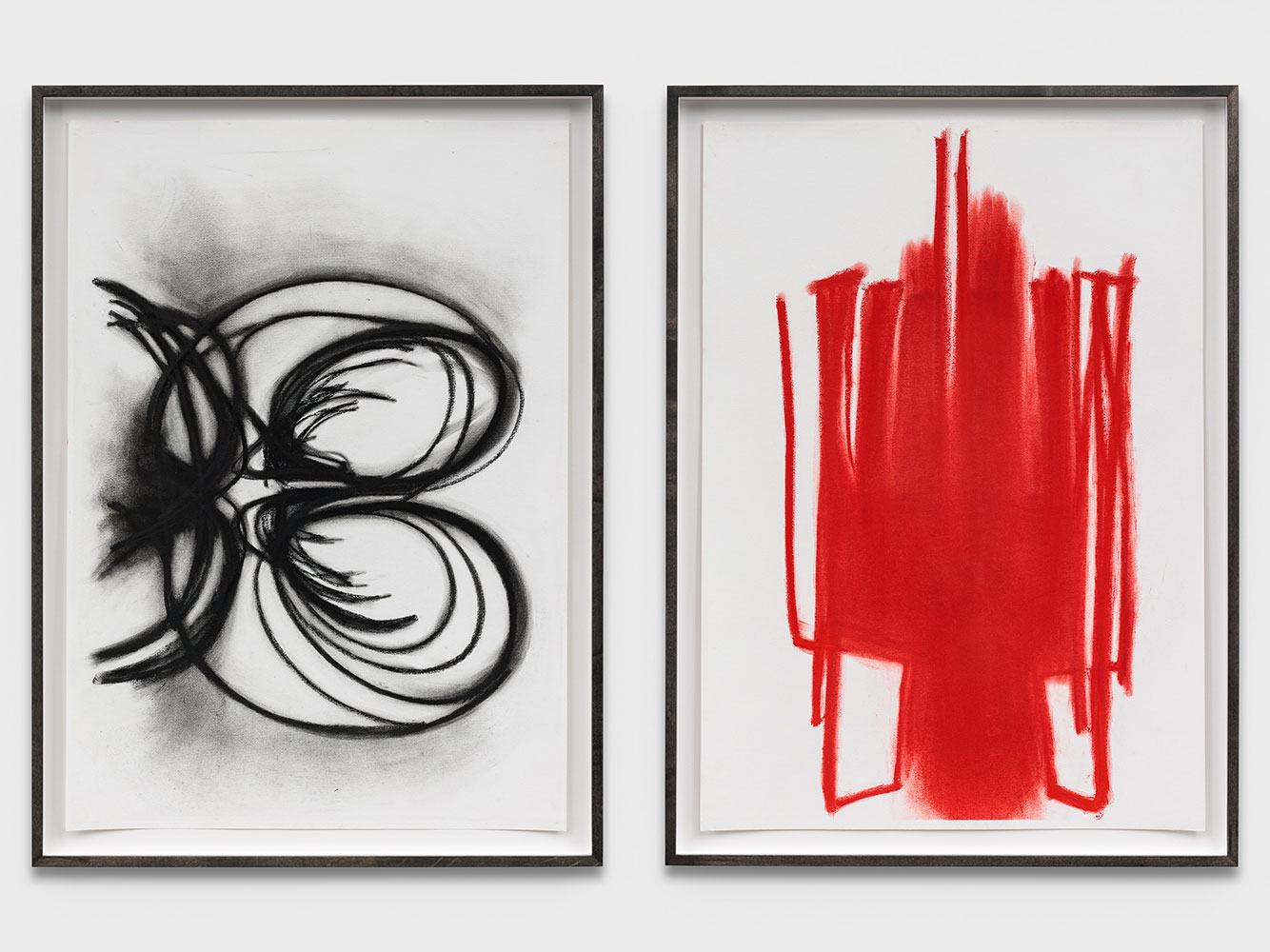PRESENTATION: Lena Henke-Dark Glasses
 Lena Henke has developed a diverse body of sculptural works, often arranged in comprehensive spatial installations. Henke’s work references urban planning, Land Art, human relationships, sexuality and fetishism, consistently infiltrating the patriarchal structure of art history with a very smart and humorous tone. Her formal language and use of materials often alludes to Minimal Art combined vividly with Surrealist imagery to examine the structures of street life and the ideas of city planners and urban theorists such as Jane Jacobs, Roberto Burle Marx, and Robert Moses.
Lena Henke has developed a diverse body of sculptural works, often arranged in comprehensive spatial installations. Henke’s work references urban planning, Land Art, human relationships, sexuality and fetishism, consistently infiltrating the patriarchal structure of art history with a very smart and humorous tone. Her formal language and use of materials often alludes to Minimal Art combined vividly with Surrealist imagery to examine the structures of street life and the ideas of city planners and urban theorists such as Jane Jacobs, Roberto Burle Marx, and Robert Moses.
By Dimitris Lempesis
Photo: Layr Gallery Archive
Lena Henke’s exhibition “Dark Glasses” continues her engagement with the complex power dynamics of identity and gender, interfacing with histories of art and architecture through appropriation, control, and submission. Taking its title from Roland Barthes’s “A Lover’s Discourse: Fragments” (1978) withdrawing from a multiplicity of literary references to explore the whimsical phenomenon of love, the exhibition unfolds Henke’s fascination with design objects, industrial processes, and natural materials to investigate and subvert pre-set concepts juxtaposed with autobiographical references. Engaging with the spatial features of the gallery as an architecture of potentialities, the artist confronts visitors already from the outside with three walls of tightly interlocked recycled tires visible through the former supermarket display windows. Titled “A hard shoulder I, II, III”, ( all 2024), a word-play mix-hinting at the emergency stopping lane on the outer side of the road and the body muscles either pressured or stuck by too much movement–the tires are interlocked almost to reach human height. Partially obstructing the view, the installation prompts child-like curiosity creating a peekaboo game of hide and seek. The recycled tires–an object dear to the artist’s sculptural vocabulary–present signs and traces of usage, the encounter with the street warning down their manufactured features. Collecting almost 200 of them, all used but cleaned on the occasion of the exhibition, Henke has decided to paint a single one in bright red, a target, a sign, and perhaps a visual punctuation. At closer inspection we realize the paint has leaked into the space, shading in red and black the nearby leather objects, drawings and other exhibited works. Tires for Henke unfold a dichotomy: on one side, they play in the artist’s memory as a tool to leave the rural part of Germany she is from–the car as a capitalistic symbol of emancipation and travel fantasy; on the other, these objects are exhausted commodities, their industrial circular cycle posing as a struggling body. Manifesting an accelerated present, as per Paul Virilio’s dromology idea, velocity and the tools to obtain it destroy space and compress time deforming our perception of reality. The moon’s gravitational pull generates a tidal force moving water from and to the shore every 12 hours. By replicating its perpetual rotation around the earth with your eyes closed, you would make a series of circular signs, the moon’s force guiding your hands on paper. Six large-scale gestural chalk drawings on paper, “Untitled” (2024), framed in dark hues that look like the used tires blocking out the windows’ view right next to them, engage directly with our intimate senses. Drawn by the artist almost unconsciously with both hands by using the surrealist technique of automatism, the images appear in motion. The push and pull of our divided selves, the contrast between natural and industrial, as well as familiar and manufactured registers surface, leaving a feeling of tension. Destabilizing the two-dimensional representation and the three-dimensional perception of a sculptural body, Henke’s new series “Combustions” (2024), offering a nod through their title to Alberto Burri’s iconic “Combustione” appears as skin perhaps a cartography, an epidermis dividing subjectivity from the conditioning of the surrounding world. Seducing through the haptic experience, skins, laser-etched from either a digital image or a drawing have three-dimensional features as they are stuffed with carved material from underneath, conferring an illusion of depth and tangibility while reminiscing of veins or a map to navigate. Introducing dialectical materialism through the layering of body and device, these works merge manual and mechanized processes with photography. In “The Baudelaire’s Fractal” (2020_, the image of a car’s inner workings, photographed from underneath, is burned onto natural unprocessed leather. Henke, who has previously worked as a car photographer, decides to crawl under the machine–a very sensual act of submission–to portray her own car with a frontal gaze. A series of digitally reworked images of different blocks of tightly compressed car tires bound together by metal wire–framed before their journey to the recycling plants–serve as both visual material and inspiration. Quoting a series of sculptures featuring compressed car tires, recently exhibited as part of the exhibition “Good Year” at MARTa Museum Herford, Germany, Henke inquiries the conditions of gendered spaces, reflecting on the interplay between hard and malleable materials. Echoing notions of reproduction and appropriation, the work holds a revolutionary power: by positioning an image within an image while subverting the relationship between photography and sculpture it opens up new possibilities of representation and perception suspended between the mechanical and the subjective.
Photo: Lena Henke, A hard shoulder I, 2024, Car tires, dimensions variable, Courtesy the artist & Layr, Vienna, Photo: Kunst-Dokumentation.com
Info: Layr Gallery, Singerstraße 27, Vienna, Austria, Duration: 11/3-18/5/2024, Days & Hours: Wed-Fri 12:00-18:00, Sat 12:00-16:00, https://emanuellayr.com/

Right: Lena Henke, not yet titled, 2024, Soldered and boiled leather, pigment and steel mounted on Austrian granite, on wooden pedestal 30 x 30 x 167 cm, Courtesy the artist & Layr, Vienna, Photo: Kunst-Dokumentation.com

![Left: Lena Henke, Combustions 18 [Two Wheeler], 2024, Laser etched leather, pigment on wooden panel 250 x 170 x 15 cm, Courtesy the artist & Layr, Vienna, Photo: Kunst-Dokumentation.comRight: Lena Henke, Lena Henke, Combustions 23 [Sidewall failure], 2024,Laser etched leather, pigment on wooden panel 150 x 125 x 15 cm, Courtesy the artist & Layr, Vienna, Photo: Kunst-Dokumentation.com](http://www.dreamideamachine.com/web/wp-content/uploads/2024/05/08-16.jpg)
Right: Lena Henke, Lena Henke, Combustions 23 [Sidewall failure], 2024,Laser etched leather, pigment on wooden panel 150 x 125 x 15 cm, Courtesy the artist & Layr, Vienna, Photo: Kunst-Dokumentation.com

Right: Lena Henke, Untitled, 2024, Pastel on paper in artist’s frame 92 x 67 cm (framed), Courtesy the artist & Layr, Vienna, Photo: Kunst-Dokumentation.com

Right: Lena Henke, Untitled, 2024, Pastel on paper in artist’s frame 92 x 67 cm (framed), Courtesy the artist & Layr, Vienna, Photo: Kunst-Dokumentation.com

Right: Lena Henke, Untitled, 2024, Pastel on paper in artist’s frame 92 x 67 cm (framed), Courtesy the artist & Layr, Vienna, Photo: Kunst-Dokumentation.com
